Recognition of Aboriginal Law: An Australian Perspective
VerifiedAdded on 2020/02/24
|7
|1465
|343
Essay
AI Summary
This essay explores the recognition of Aboriginal law within the Australian legal system. It begins by defining Aboriginal law as the customary law of Australia, contrasting it with the common law system, and highlighting the conflicts that arise, particularly regarding personal laws and legal precedence. The essay examines the historical context, including the Aboriginal Protection Act of 1897 and the subsequent shift in government policies. It emphasizes the importance of recognizing Aboriginal law based on human rights principles and international covenants. The paper recommends statutory provisions, Aboriginal participation in decision-making, and the development of law and justice plans to integrate Aboriginal customary law. The essay concludes by emphasizing the need for mutual respect, understanding, and efforts to remove ambiguities between the two legal systems, advocating for courts to consider Indigenous customary law in sentencing and other legal decisions, and highlighting the ongoing discrimination faced by Indigenous communities. References include legal cases, academic articles, and government documents related to the topic.
1 out of 7
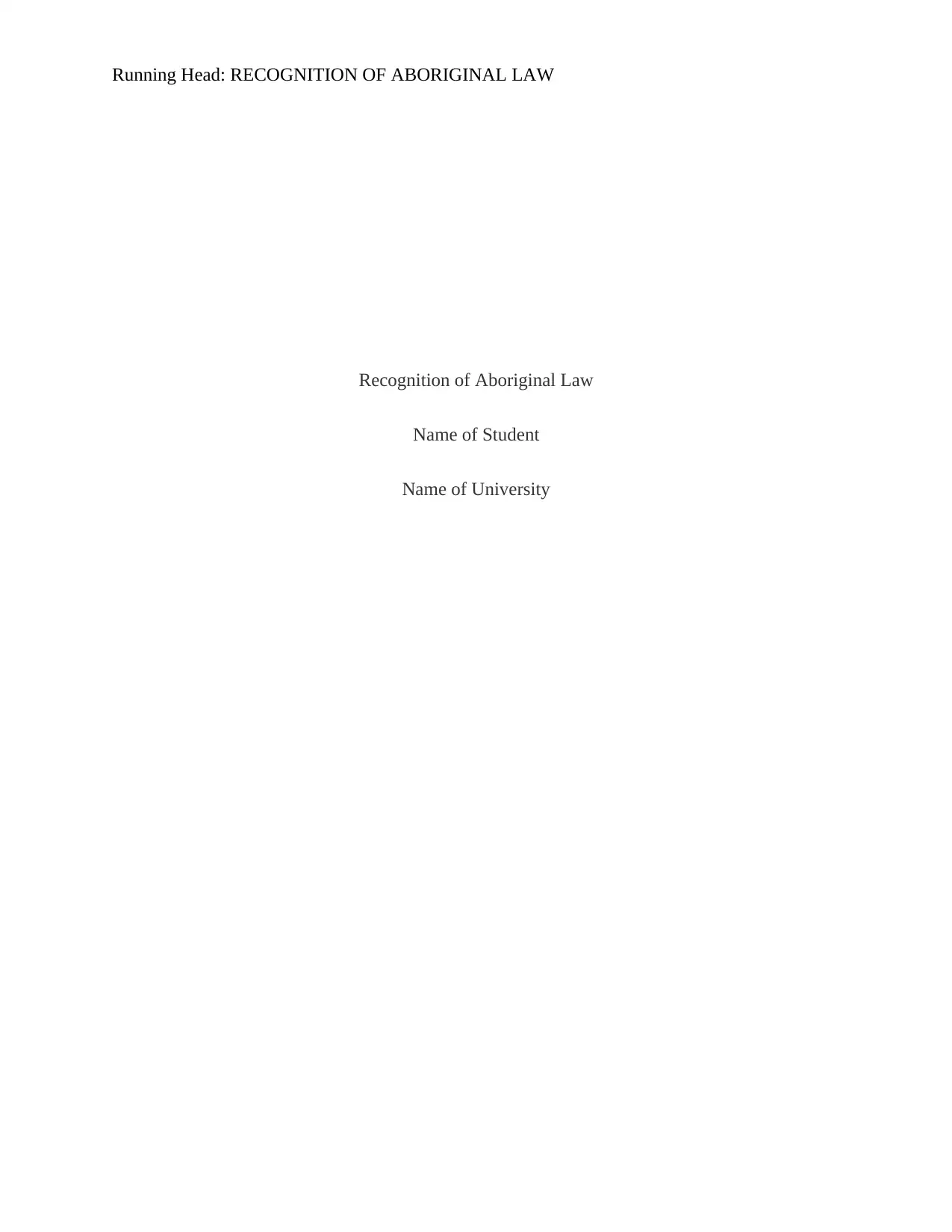
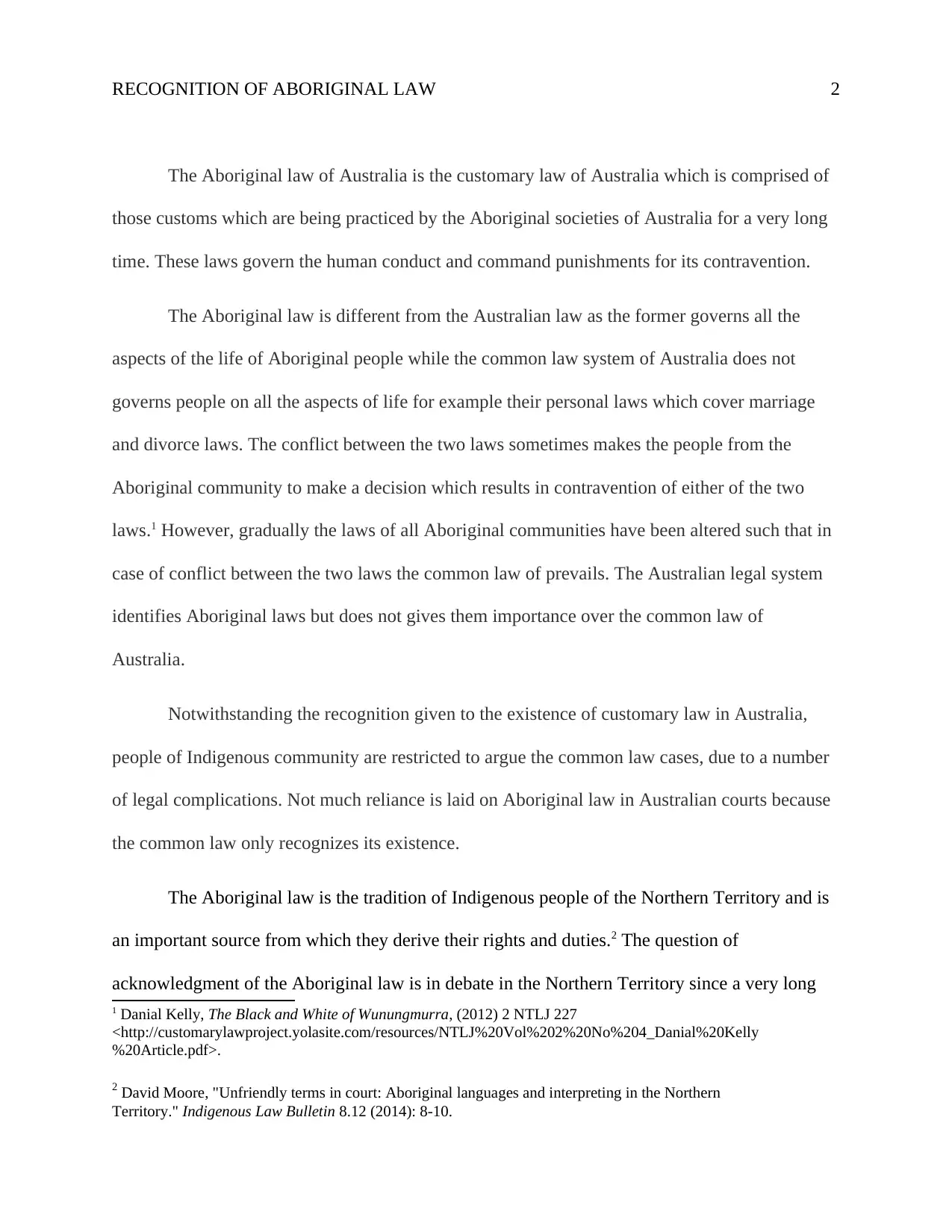
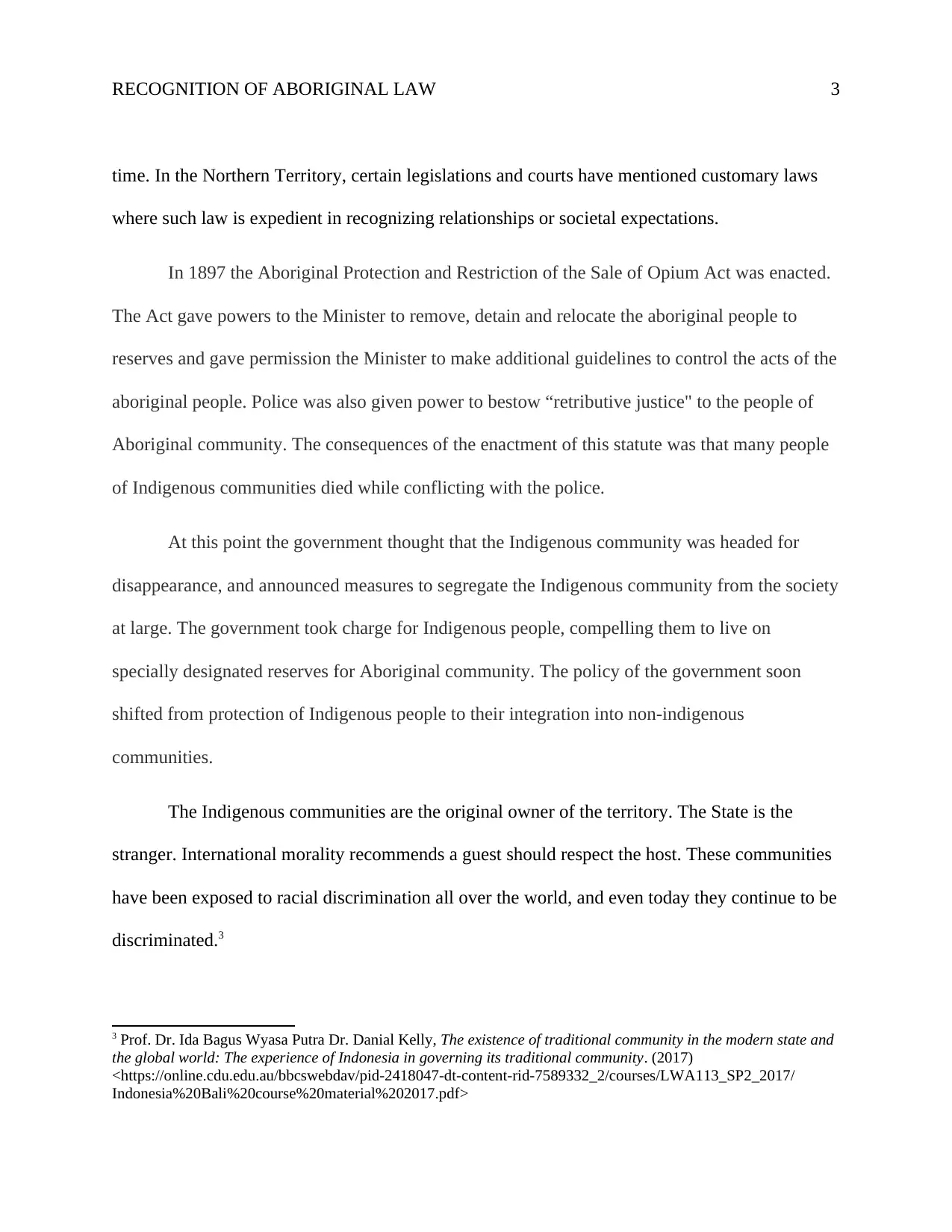
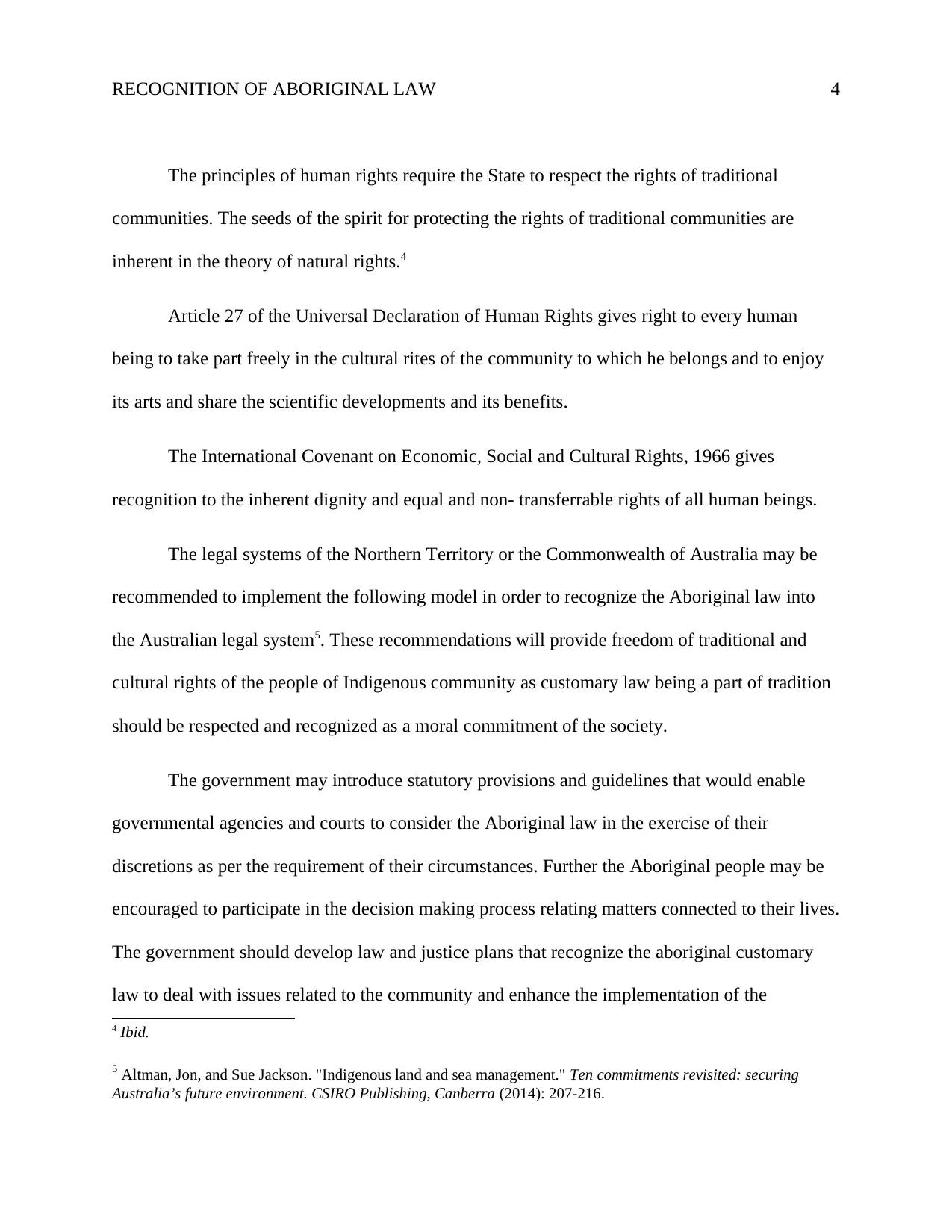
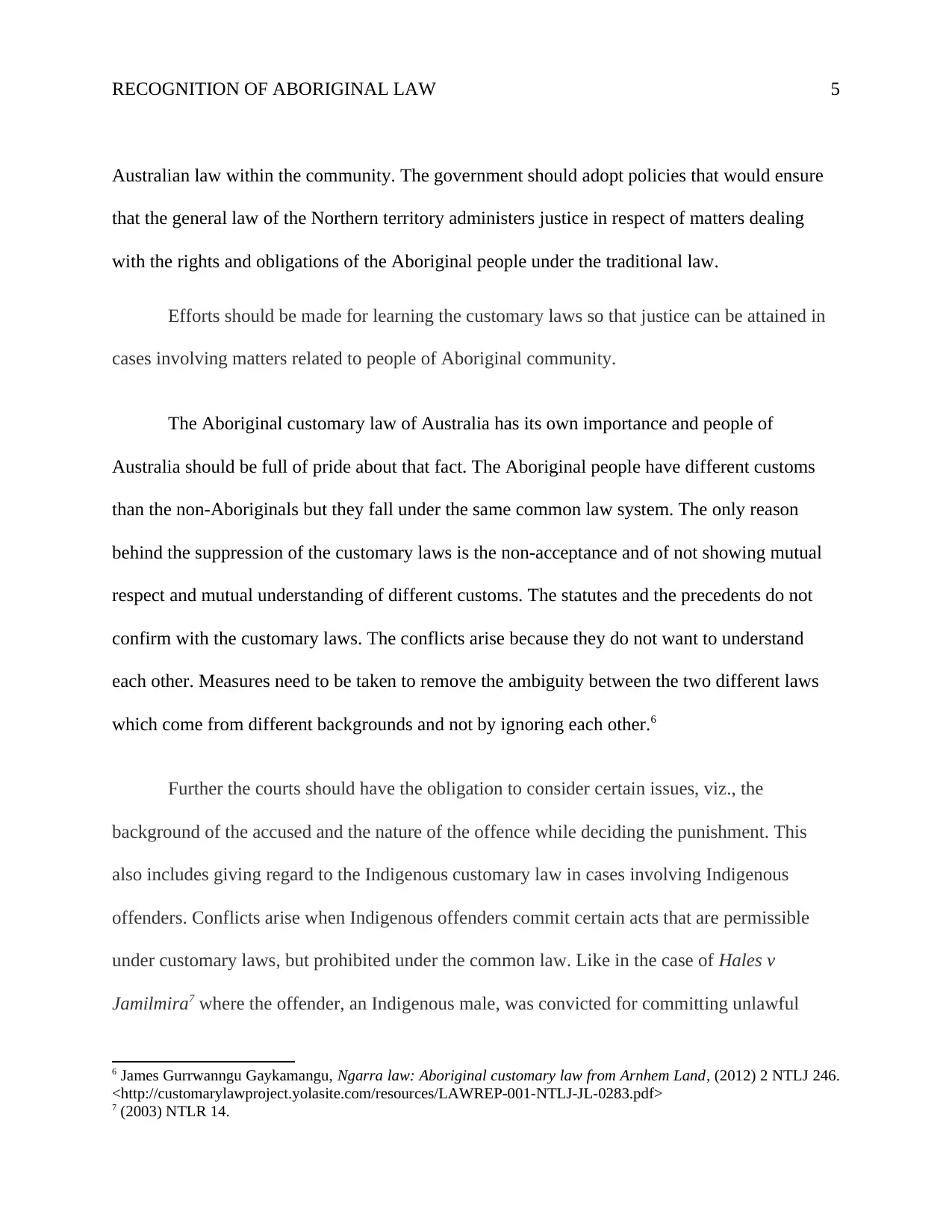
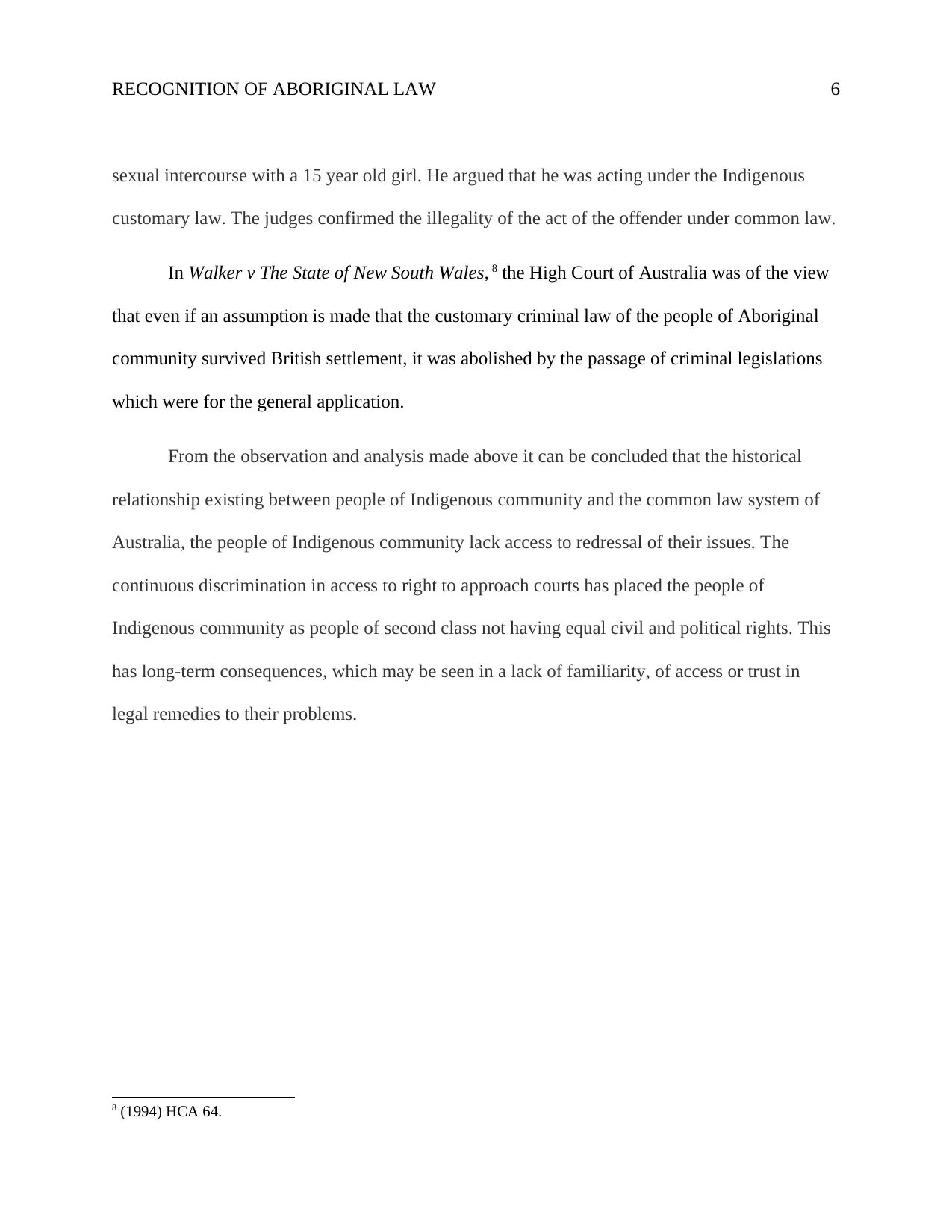
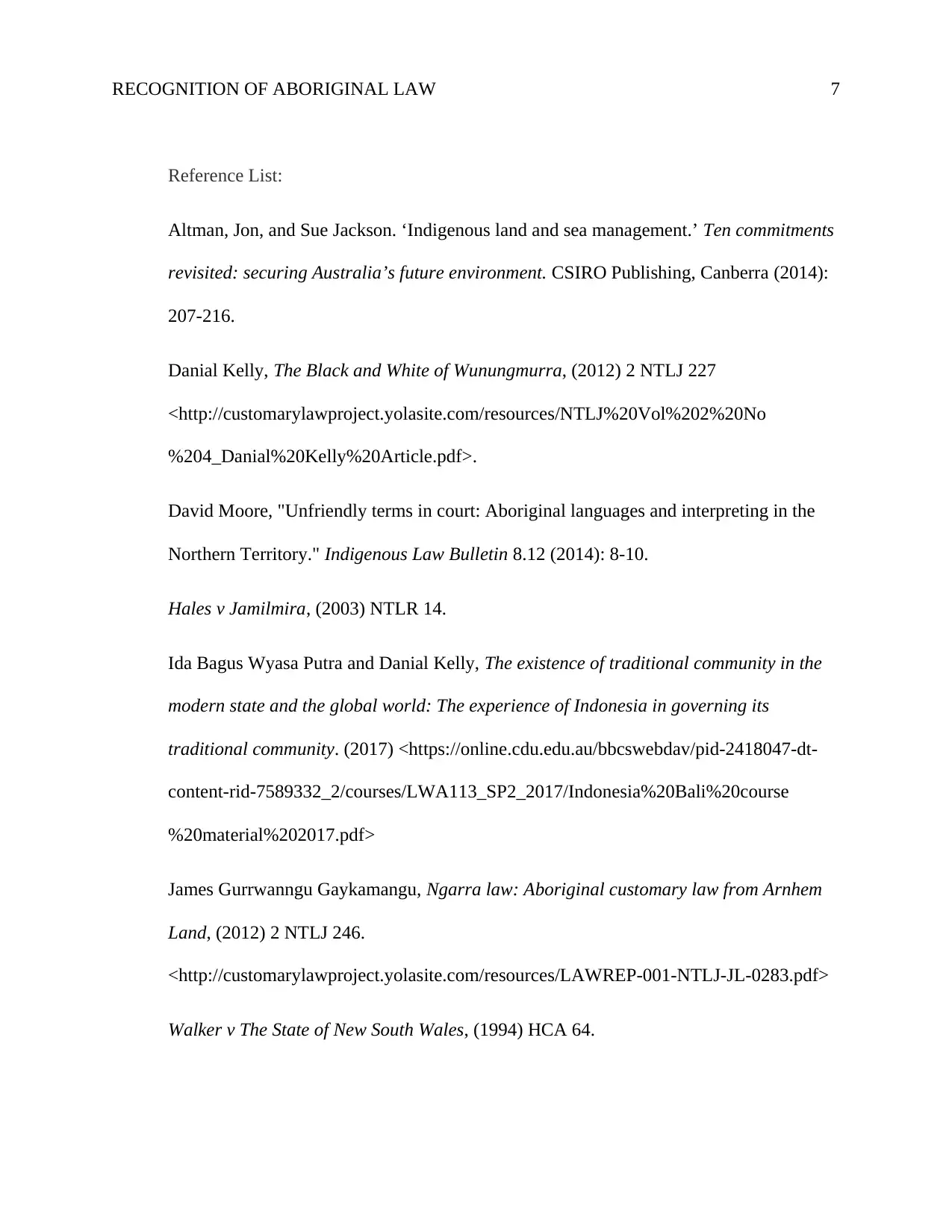





![[object Object]](/_next/static/media/star-bottom.7253800d.svg)